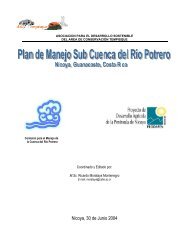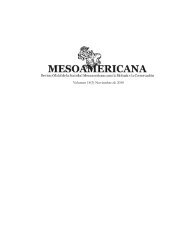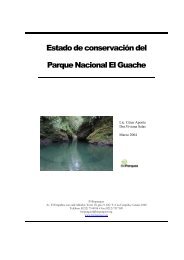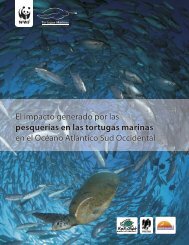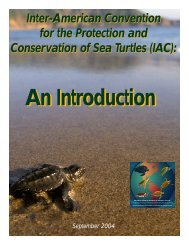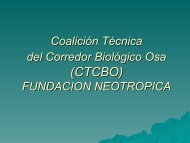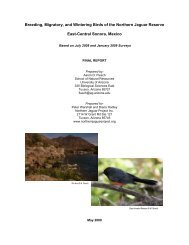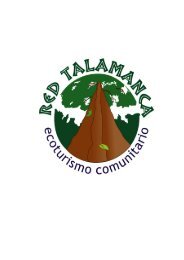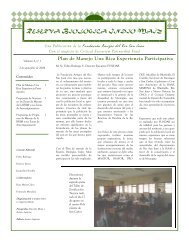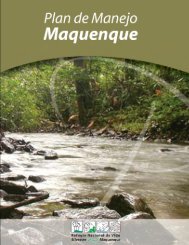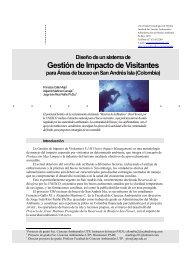Una visión para el futuro, una agenda para hoy - Eco-Index
Una visión para el futuro, una agenda para hoy - Eco-Index
Una visión para el futuro, una agenda para hoy - Eco-Index
Create successful ePaper yourself
Turn your PDF publications into a flip-book with our unique Google optimized e-Paper software.
The Maya Forest represents one of the mostculturally rich zones of the American continent,with almost 11 million inhabitants b<strong>el</strong>onging todifferent peoples, ethnic groups and cultures. Sixmillion are indigenous, from 13 linguistic groupsof the Maya people (Chontal, Tz<strong>el</strong>tal, Tzotzil,Lacandón, Chol, Tojobal, Canjobal, Chuj,Qanjob´al, K´eqchi, Itzá, Mopán and Yucateco)and the Zoque people. Five million are mestizodescendents of Europeans and Native Americans.In adittion, there are the Garif<strong>una</strong> people,descendents of Africans.The Mexican population is predominantly urban(60%), mostly concentrated in three large cities(Cancun, Merida and Veracruz) and severalmedium-sized cities such as Coatzacoalcos, VillaHermosa, Ciudad d<strong>el</strong> Carmen, Campeche andChetumal. In Guatemala the population is larg<strong>el</strong>yrural (75%) and in B<strong>el</strong>ize is distributed evenlybetween the cities and countryside.Land of Contrasts: Wealth,Poverty and DiversityRural poverty lev<strong>el</strong>s are a problem in the threenations. In Chiapas 20% of the population ispoor; over 57% of the population lives b<strong>el</strong>ow thepoverty line in Guatemala and 44% in B<strong>el</strong>ize 2 .Family income is dependent on natural resources.Elsewhere, tourism dev<strong>el</strong>opment in QuintanaRoo, the oil industry in Campeche and Tabasco,and urbanization throughout the areas haveprompted heavy migration from rural to urbanzones with more services and jobs. On one hand,extensive areas previously used for agriculturehave been restored in the Yucatan Peninsula, andhuman pressure on natural resources hasdiminished. On the other, these activities havedemanded the dev<strong>el</strong>opment of infrastructure(docks, ports, roads, energy generation anddistribution), often at the expense of naturalcover.Thus, the ancient mixes with the modern in theMaya Forest; wealth and poverty persist, areminder of the gap that must be closed betweenthem; culture and nature merge like a greatbinomial that can be a w<strong>el</strong>lspring of greaterquality of life for people, a window towarddev<strong>el</strong>opment in harmony with the environment.2Information on Mexico from INEGI 2004, on Guatemala from INE 2004, and on B<strong>el</strong>ize from UNDP.Each document employs its own indices in measuring poverty.7




